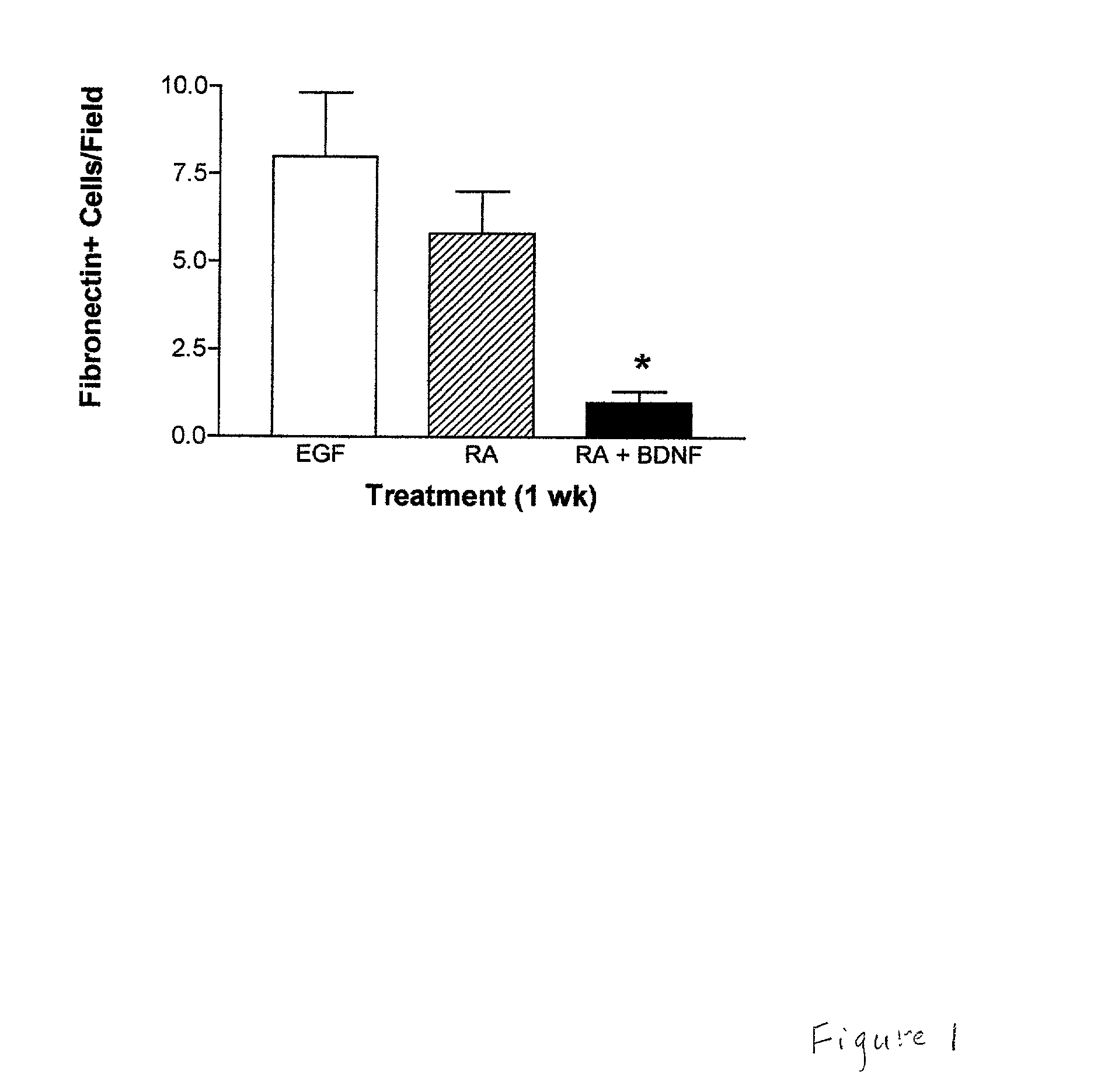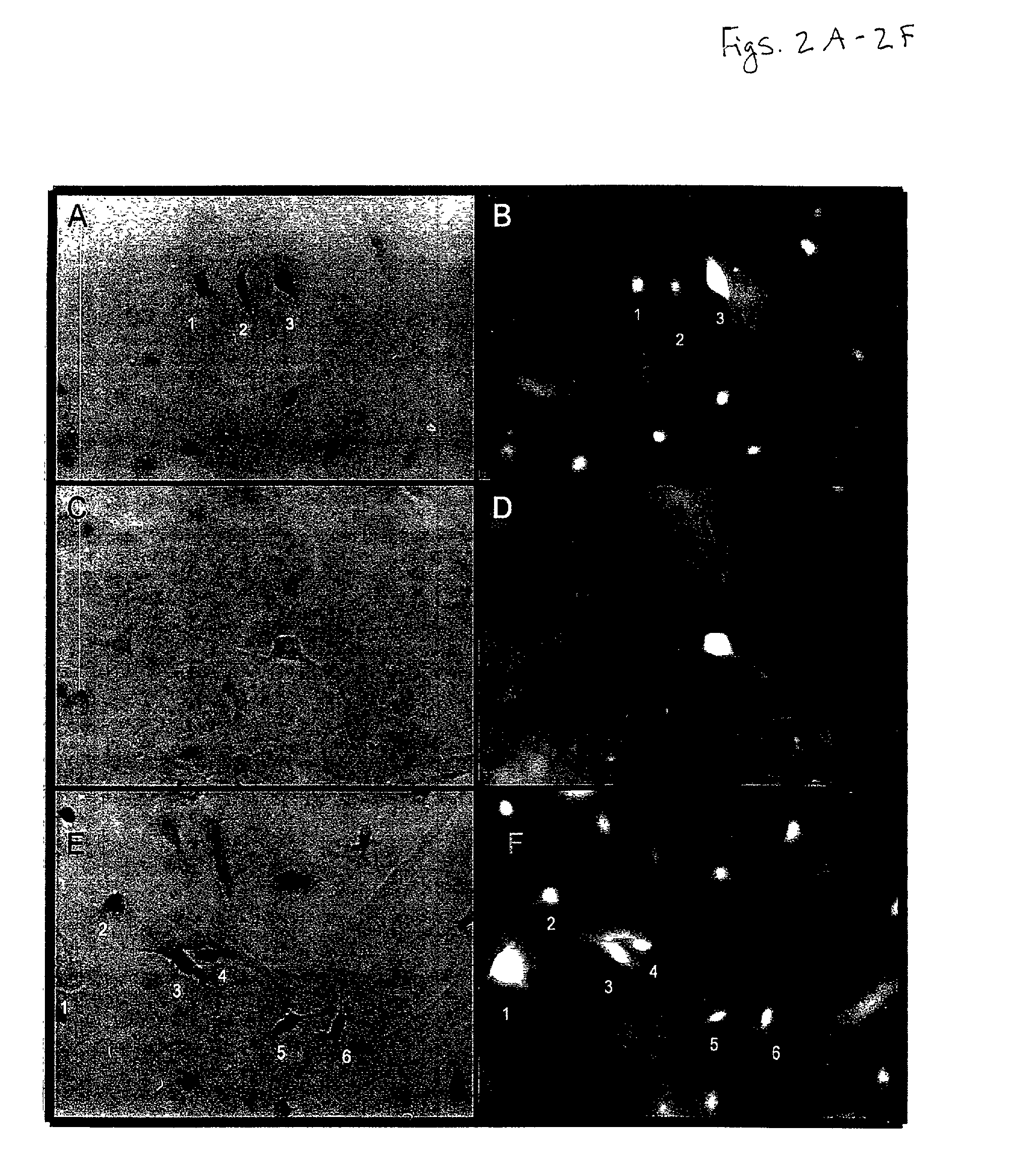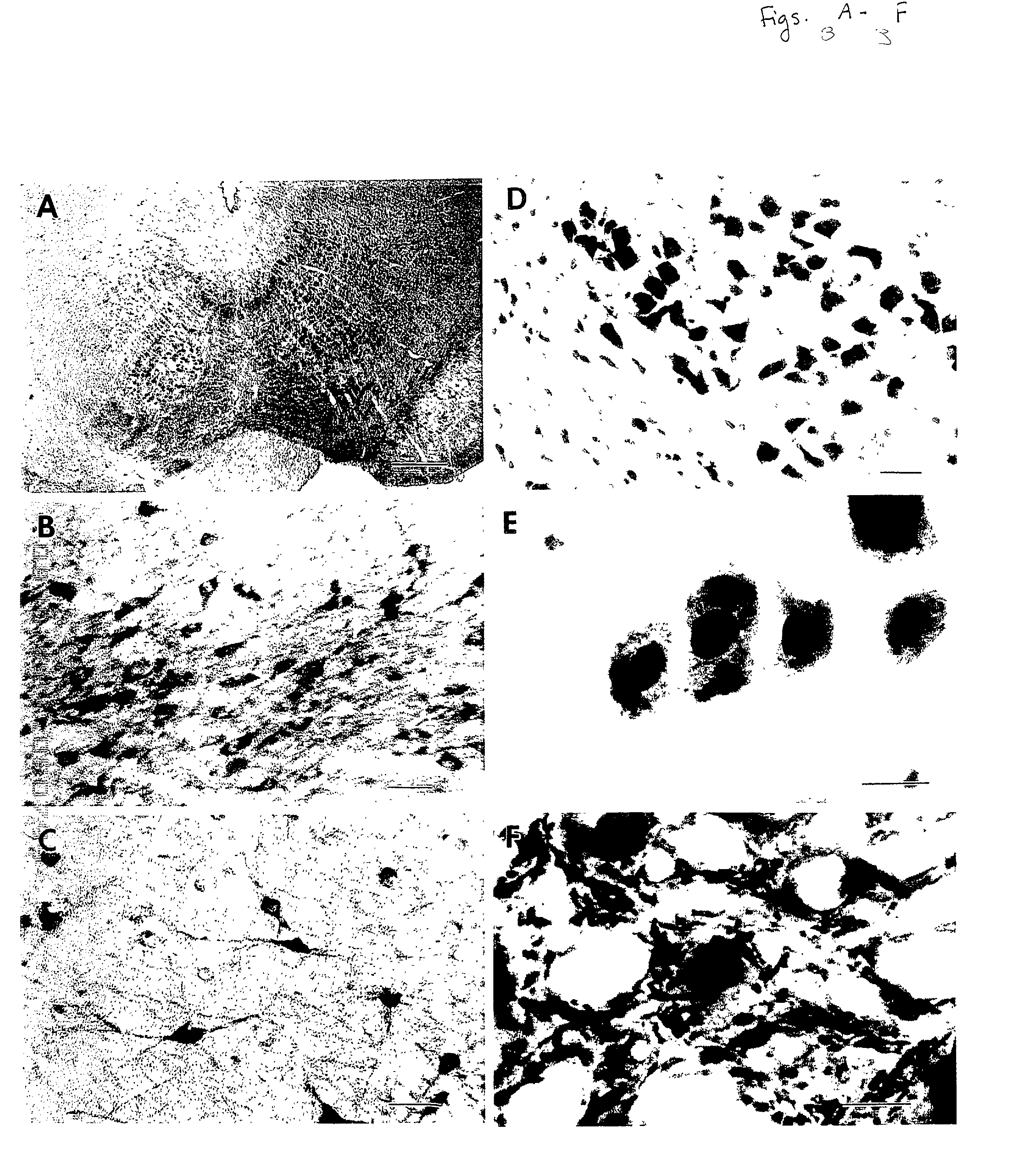Bone marrow cells as a source of neurons for brain and spinal cord repair
a bone marrow cell and brain technology, applied in the field of bone marrow cells as a source of neurons for brain and spinal cord repair, can solve the problems of no effect of these therapeutic measures on the underlying disease process, no longer being able to compensate for the loss of basal ganglia dopamine, and difficult if not impossible to rebuild
- Summary
- Abstract
- Description
- Claims
- Application Information
AI Technical Summary
Problems solved by technology
Method used
Image
Examples
example 1
In Vitro Differentiation
[0075] Bone marrow was obtained from either mouse femurs or from human bone marrow aspirates. Human bone marrow was diluted 1:1 with Dulbecco's Minimal Essential Media (DMEM), (GIBCO / BRL) and 10% fetal bovine serum (FBS) and centrifuged through a density gradient (Ficoll-Paque Plus, 1.077 g / ml, Pharmacia) for 30 min at 1,000 g. The supernatant and interface were combined, diluted to approximately 20 ml with MEM with 10% fetal calf serum (FCS) and plated in polyethylene-imine coated plastic flasks. Mouse bone marrow was placed in 10 ml PBS and 5% bovine albumin. Cells were washed in this medium and centrifuged at 2000 rpm for 5 min. Cells were resuspended in growth medium consisting of DMEM supplemented with 2 mM glutamine, 0.001% .beta.-mercaptoethanol, non-essential amino acids and 10% horse serum. The cells were incubated in the flasks for two days after which non-adherent cells were removed by replacing the medium. After the cultures reached confluency, th...
example 2
[0077] Bone marrow cells were induced to become neuron-like cells in vitro employing methods similar to those used to promote differentiation of embryonic stem (ES) cells. J. Dinsmore, et al., Cell Transplantation 5:131-143 (1996). Bone marrow was obtained from adult mice and divided into two fractions using magnetic cell sorting. First, bone marrow cells were collected from mouse femur and tibias by flushing the shaft with buffer (PBS supplemented with 0.5% BSA, pH 7.2) using a syringe with a #26 G needle. Cells were disaggregated by gentle pipetting several times. Cells were passed through 30 .mu.m nylon mesh to remove remaining clumps of tissue. Cells were washed by adding buffer, centrifuging for 10 min at 200.times. g and removing supernatant. The cell pellet was resuspended in 800 .mu.L of buffer for each 10.sup.8 cells. With a magnetic cell sorting kit (Milteny Biotec, Inc, Auburn Tex.), hematopoietic bone marrow cells were labeled with Scal+ microbeads. The labeled bone marr...
example 3
In Vivo Differentiation
[0081] To determine whether differentiation of BMSC cells into neurons would occur in vivo, BMSC from lacZ mice were grafted into denervated or normal rat striatum. Prior to grafting, BMSC were treated for 2 days with cis-9 retinoic acid (0.5 .mu.M) and BDNF (10 ng / ml). Three weeks prior to grafting, the graft site of the caudate / putamen of rats was treated with unilateral intranigral injections of 6-hydroxydopamine (6-OH DA). A single injection of 6-OH DA (Sigma; 2.5 .mu.L, 3.6 .mu.g / .mu.L for a total dose of 9 .mu.g in 0.2% ascorbic acid) was made into the right ascending mesostriatal dopaminergic system (4.4 mm posterior to bregma, -1.2 mm laterally and -7.8 mm ventral to dura with the toothbar set at -2.4 mm). The 6-OH DA was delivered at a rate of 1 .mu.L / min. The syringes were held in place for an additional 5 min before slow withdrawal.
[0082] BMSC suspension aliquots were deposited in the striatum along a single needle tract on the same side as the 6-OH...
PUM
| Property | Measurement | Unit |
|---|---|---|
| time | aaaaa | aaaaa |
| volumes | aaaaa | aaaaa |
| density | aaaaa | aaaaa |
Abstract
Description
Claims
Application Information
 Login to View More
Login to View More - R&D
- Intellectual Property
- Life Sciences
- Materials
- Tech Scout
- Unparalleled Data Quality
- Higher Quality Content
- 60% Fewer Hallucinations
Browse by: Latest US Patents, China's latest patents, Technical Efficacy Thesaurus, Application Domain, Technology Topic, Popular Technical Reports.
© 2025 PatSnap. All rights reserved.Legal|Privacy policy|Modern Slavery Act Transparency Statement|Sitemap|About US| Contact US: help@patsnap.com



